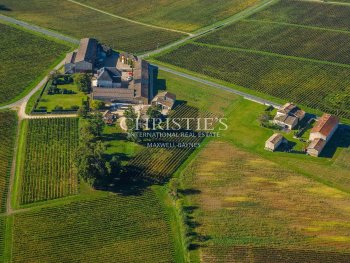Vosne-Romanée focuses on biodiversity in its vineyards

n a first for Burgundy, Vosne-Romanée, the famous 150-hectare Côte de Nuits appellation, is working collectively to list and develop its biodiversity. During its launch phase in spring 2021, the project brought together the local producers’ organisation, the town council and the chamber of agriculture. “The idea was to work at village level because in a fragmented wine region like Burgundy, any action has consequences for the neighbour. Also, at this level, we can obtain representative results for the hillside vineyards, which can be used for other appellations”, explains Lise-Marie Lalès, an advisor with the Côte-d'Or chamber of agriculture.
The group carried out an assessment of the entire village hillside, from the village itself to the forest. “We started by listing the potential habitat areas, i.e. grassy areas, walls, the dry stone walls or ‘meurgers’, shrubs and trees. That's why it was important to include the village council, which is tasked with mowing certain areas”. The birds there were then inventoried with the help of the League for the Protection of Birds. Only birds were involved because “they are a simple, quick indicator of biodiversity”.
The results show there are more potential habitats and birds at the top of the hill, where the forest begins, and at village level. Between the two, “quite understandably there is an area that is less rich in terms of biodiversity, because it is entirely used for winegrowing”, continues Lalès. This has produced many avenues for improvement. “Before considering agroforestry, we have to start by making the most of what is already here”. Hence, “there are quite a few grassed areas in Vosne, but their usage is not optimised. We also need to work on restoring the dry stone structures”. Subsequently, consideration can be given to planting hedges and trees. Lalès reminded growers that for this purpose, “there are different support schemes depending on the wine regions”.






